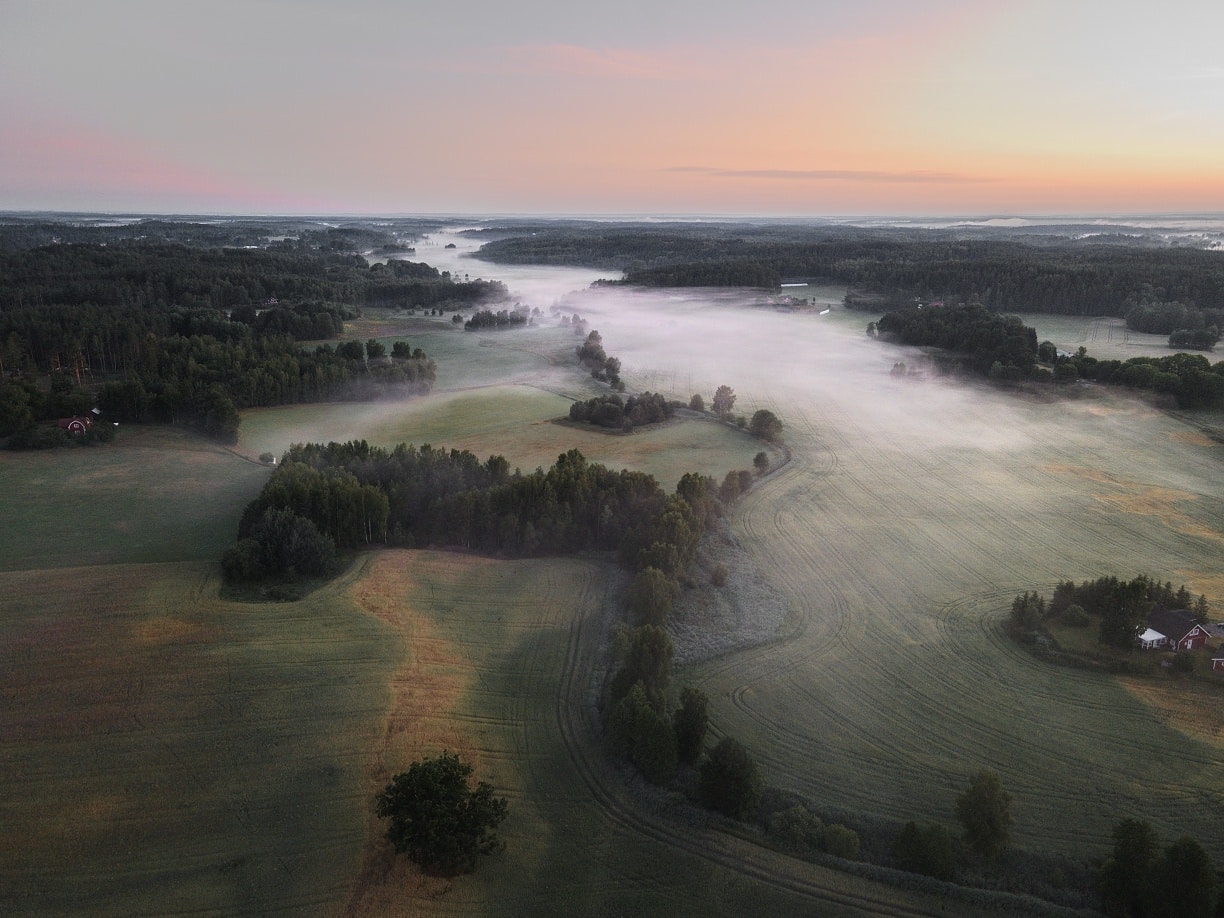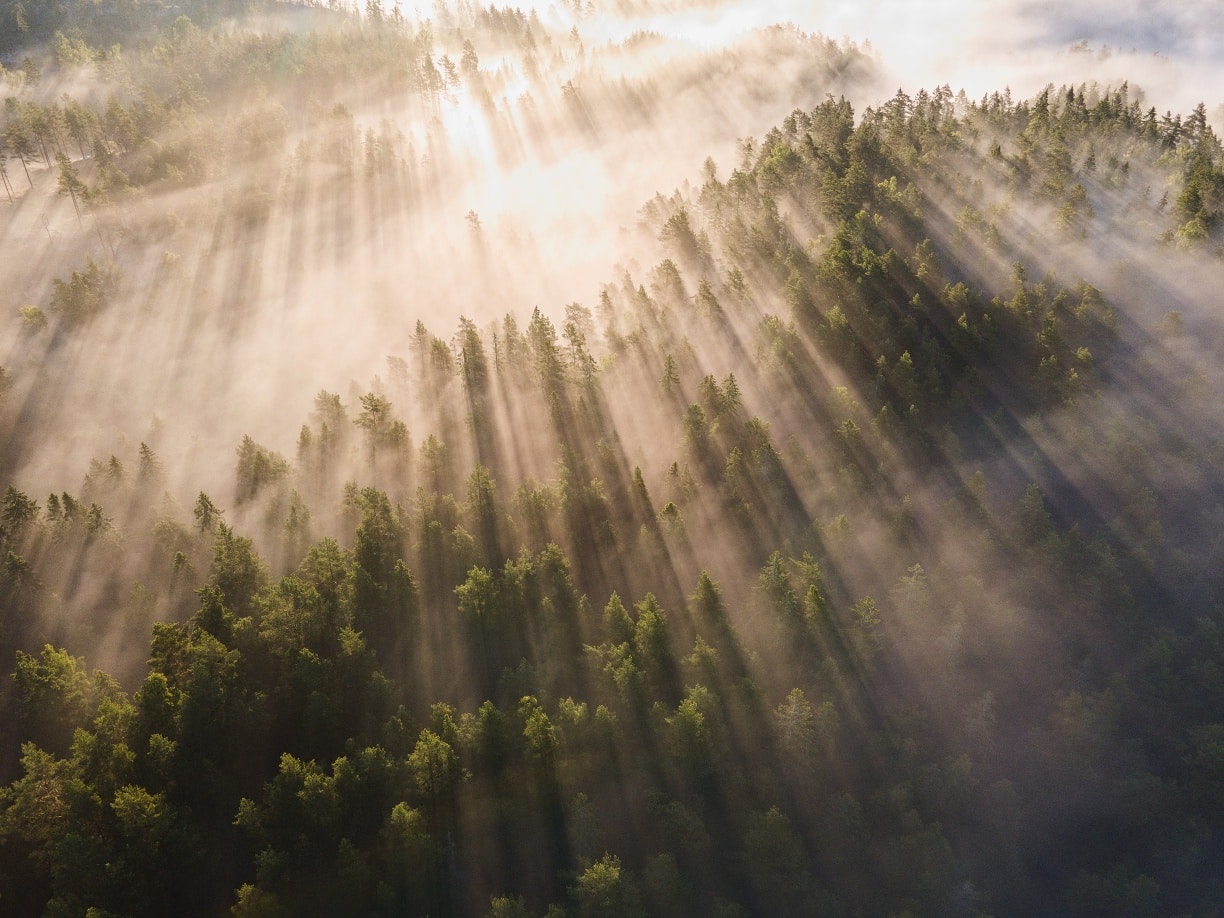How To Get Captivating Drone Images

A drone allows photographers to get truly unique perspectives. With the help of a few tips and tricks, you can easily turn your drone photos and videos into something more appealing. This article will cover the best methods for getting captivating drone images from the great outdoors.
What will you need?
First, you need to invest in a drone. While the older DJI drones work, I highly recommend buying a newer drone since the overall performance of drones has significantly improved in recent years. For example, the newer models offer higher image quality, flight time, and aircraft connection, which is a big plus in the field.
The ideal conditions
The most efficient way to level up your drone photos is to shoot during sunrise or sunset since the light is softer and more captivating. As a result, it will become easier to correctly expose your images since the light is softer in comparison to the harsh light at daytime.
In my opinion, fog is undoubtedly the most interesting element to photograph because it enables the photographer to get creative with the images’ lighting. On mornings with very thick fog, the fog can form intriguing light rays. Light rays are another subject that’s perfect to photograph with a drone since you can get a bird’s-eye view that cannot be achieved from the ground for these types of scenes.
Apart from the conditions mentioned above, rare weather conditions can make your image unique. For example, try capturing some scenes with freshly-fallen snow, melting ice on the lakes, or the intense colours of autumn.
Different compositions
In order to capture interesting drone photos, just like when shooting with a camera, keep the basic rules of composition in mind. One composition rule that I personally find very useful is the rule of thirds. The rule of thirds means that you place your main subject about one-third into the frame. This is an easy and effective way to make your images more interesting and appealing to the eye.
Another trick that you can utilize when composing your photos is to use leading lines. By taking advantage of leading lines, you can effectively control where the viewer’s attention should be directed in an image. Moreover, the use of leading lines can also help increase the overall impression of an image, making it more interesting to look at.
A composition that only a drone can deliver is the top-down perspective. This is a very fun composition to use. When combined with leading lines, this composition can be very interesting. To make use of leading lines, try finding a subject that pops from the rest of the image. For example, I used a red car as the main subject for the image below, as I believed the red colour would pop nicely against the monotone grey background.
When flying my drone, I like to search for minimalist compositions. In my opinion, minimalist compositions are refreshing as they give the viewer room to truly reflect on the image. While you can keep the different rules of composition in mind when taking minimalistic images, I think the images usually turn out best when you spend less time thinking and give yourself more creative freedom. When out in the field, I often find myself looking for subjects that stand out from the rest of the landscape, such as lonely trees or cabins. Then, I simply take it from there and capture what appeals to me most at that given moment.
Subjects
When capturing landscapes from above, some of the most common subjects you will find include roads, trees, lakes, and houses. If you want to plan your shoots before heading out, a good tip is to look up interesting roads or tree formations on Google Maps. When combining the different aforementioned composition techniques, various types of images can be achieved using these subjects. It can also be cool to use humans as the main subject, as this gives the viewer a better sense of the scale of the landscape.
Drones for videography
Many of you are probably using your drone not only to capture still images, but also for shooting videos. A simple way to make your videos more cinematic is to tilt the camera while flying the drone. For example, if you fly towards a tree, you can simultaneously tilt the camera towards the horizon. This way, the landscape is gradually revealed to the viewer, making it more interesting. All kinds of variations in movement can make the videos more exciting, and the tilt function of the camera is definitely worth using from time to time.
I hope this article has inspired you to get more content with your drone! So, let’s head out, get that drone flying, and most importantly, have fun!










Marcin
Hello.
I really like first picture in this article.
Is there any chance to get it in a high resolution?
Additionally I have one more question. I am a musican in a worship band.
We would like to use this foto for the worship posters when we organize events, maybe CD cover as well.
Is there a chance to have your permission to use it?
Regards
Marcin